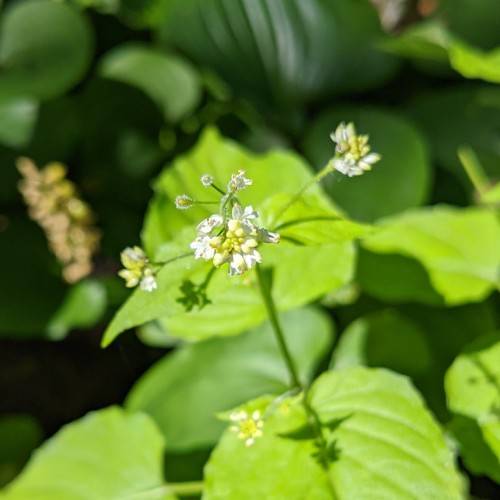
Smaller Enchanter's Nightshade
Circaea alpina
Watering:
Frequent
Hardiness Zone:
Sun:
full sun,part shade
Leaf:
Yes
Growth Rate:
Low
Poisonous To Humans:
Yes
Poisonous To Pets:
Yes
Invasive:
Yes
Care Level:
Extreme
watering
Watering Spotted Water Hemlock (Cicuta maculata var. maculata) is best done in short, deep soaks once or twice a week. Depending on the soil and time of year, watering can also be increased or decreased. In the warmer summer months, when the plant is in the growth season, it will need more water and should be watered more thoroughly and more often. In the cooler winter months, watering should be scaled back to only a few deep soaks per week. Make sure the soil is not soggy and the plant is not constantly sitting in water, as this can lead to root rot.
sunlight
Spotted Water Hemlock (Cicuta maculata var. maculata) is primarily found in wetland habitats in the United States. This plant species thrives in sunny locations and does best if it receives 6 to 8 hours of direct sunlight each day. However, if the temperatures become too extreme, the plant should be shaded from the sun’s heat to ensure its survival. During summer months, the plant should be placed in partial or light shade for protection during the hottest hours of the day. The spots of sunlight should be rotated periodically in order to ensure that all parts of the plant receive adequate light. In winter months, the plant can be safely exposed to full sun, as long as temperature remains above freezing.
pruning
Spotted Water Hemlock (Cicuta maculata var. maculata) should be pruned in late spring, after they finish flowering, to encourage new vegetative growth and promote bushier and fuller growth. Pruning should be done lightly, to prevent removing too much foliage and to keep the plant in its desired shape. Pruning should target the weaker and smaller stems, those that are thinner than other stems or have fewer leaves.It should also be done around the perimeter of the plant, trimming back long branches for an even and overall shape. Pruning may also be done to remove dead or diseased tissue, as well as any crossing or competing branches.
